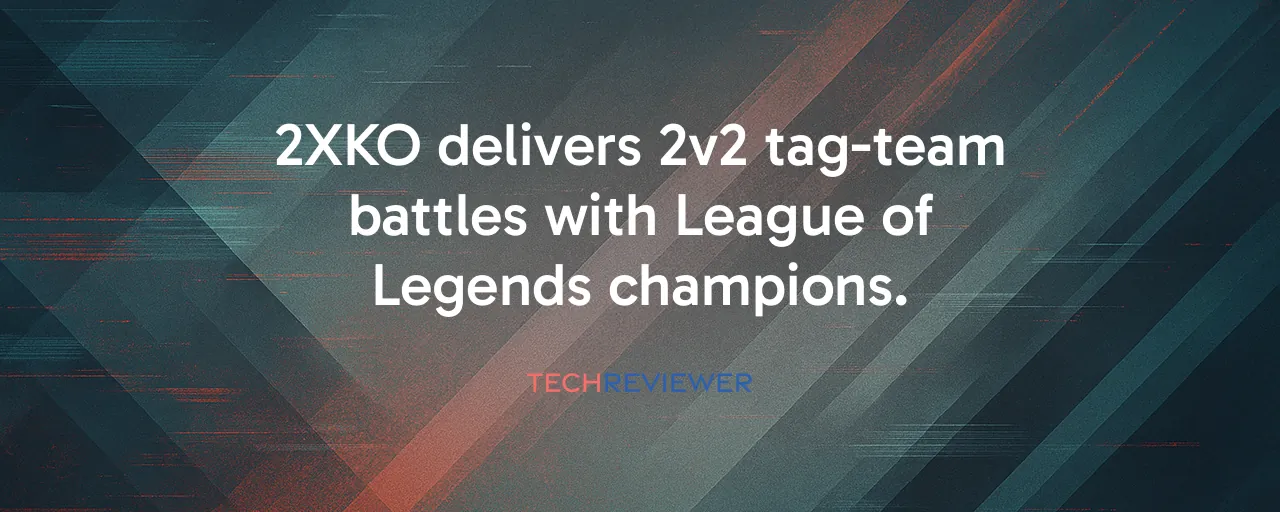A New Contender Enters the Arena
Riot Games, the powerhouse behind League of Legends, has entered the fighting game genre with 2XKO, a 2v2 tag-team brawler that launched into Early Access on October 8, 2025. Built on the familiar faces of Runeterra's champions, like the scrappy Teemo and ferocious Warwick, the game pairs accessibility with team-based chaos. Unlike traditional fighters, where one-on-one duels reign supreme, 2XKO's focus on duo synergy and seamless character switching creates a fresh dynamic. Players can team up with a friend or control both characters solo, weaving together combos and strategies that feel like a high-stakes dance.
The game's journey began in 2019 as Project L, born from Riot's acquisition of Radiant Entertainment, a studio led by Tom and Tony Cannon, the minds behind the EVO Championship Series. After years of teasers, alpha tests, and beta phases, 2XKO arrived with 11 playable characters and a promise of no progress resets, signaling Riot's confidence in its live-service foundation. But with a crowded field of established giants like Street Fighter 6 and Tekken 8, can 2XKO carve out its own space?
Simplifying the Fight for All
One of 2XKO's biggest swings is its control scheme. Ditching the complex motion inputs of traditional fighters, it uses a streamlined three-button system, Light, Medium, and Heavy attacks, paired with two Special buttons and a dedicated Tag button. This setup, inspired by games like Super Smash Bros., aims to lower the barrier for newcomers while keeping the depth veterans crave. Combo trials and First Step missions guide players through the basics, rewarding them with Champion Tokens to unlock characters like Ahri or Darius. The Fuse system lets players tweak duo synergies, adding strategic layers before the match even starts.
Street Fighter 6 showed this approach can work. Its Modern controls, which simplify inputs without gutting depth, brought in casual players while keeping pros engaged. Digital sales data from 2024 shows growth in the fighting game genre, partly due to accessibility features in titles like Street Fighter 6. 2XKO takes a similar gamble, but some fighting game veterans argue the five-button layout feels clunky compared to the intuitive four or six-button setups of older titles. During alpha testing, players using leverless controllers like the Razer Kitsune reported input conflicts, raising concerns about polish.
The Price of Style
Riot's free-to-play model removes the $60 price tag of most fighters, a move that could expand the genre's reach. The global fighting game market, valued at $1.4 billion in 2025, is projected to hit $2.5 billion by 2035, driven by digital distribution and esports growth. 2XKO's no-cost entry, backed by Riot's League of Legends juggernaut with over 150 million monthly players, positions it to tap this wave. But monetization has already sparked friction. A $100 Arcane-themed cosmetic bundle, tied to the Emmy-winning Netflix series, drew immediate backlash for its steep price and lack of individual skin options.
This echoes the missteps of MultiVersus, Warner Bros.' free-to-play platform fighter. It launched with over 100,000 concurrent players in 2022 but stumbled due to pricey cosmetics and content droughts, leading to a significant decline in its player base. 2XKO's battle pass, with free and premium tiers, offers cosmetics and progression rewards, but its three-tier structure, Standard, Deluxe, and Ultra, has some players wary of complex pricing. Riot insists competitive balance remains intact, with characters unlockable through grinding or purchases, but the community remains skeptical, given Riot's monetization history with League and Valorant.
Teamwork Makes the Dream Work
The heart of 2XKO lies in its 2v2 mechanics. Players coordinate two champions, each with unique movesets drawn from League's lore: like Ekko's time-bending tricks or Darius's brutal axe swings. Handshake tags and assist calls let teammates chain combos or turn the tide, creating moments of clutch teamwork. This setup demands new strategies: managing two health bars, picking complementary characters, and timing switches. Unlike Marvel vs. Capcom's fast-paced chaos, 2XKO emphasizes deliberate coordination, which could redefine competitive play.
Yet, balance is a beast. With each new champion added, Riot plans five seasonal drops in 2026, and the interplay of team compositions grows exponentially complex. Early beta tests showed certain duos, like Ahri and Ekko, dominating ranked matches, raising fears of an unstable meta. Riot's live-service expertise, honed over 15 years with League, gives it an edge in delivering patches, but the 2v2 format is uncharted territory. The First Impact program, sponsoring 22 community tournaments in 2025, shows Riot's commitment to grassroots esports, but only time will tell if it can foster a thriving scene.
A Genre at a Crossroads
2XKO enters a fighting game landscape reborn since the 2010s' slump. Titles like Dragon Ball FighterZ and Street Fighter 6 have fueled a renaissance, with digital sales up 11.2% in 2024. But the genre still grapples with retention and monetization woes. 2XKO's free-to-play model and League's built-in audience give it a leg up, but it faces hurdles. Console players, a key demographic, must wait until late 2025 or 2026 for PlayStation 5 and Xbox Series X/S versions, risking fragmented momentum. Veterans like pro player Chris G have voiced doubts about the control scheme's intuitiveness, and the character unlock grind could alienate players used to full rosters.
Still, Riot's track record inspires confidence. Valorant disrupted tactical shooters by blending accessibility with depth, growing to millions of players since 2020. 2XKO could follow suit, drawing League fans and newcomers alike. Its success hinges on balancing accessibility with competitive rigor, keeping monetization fair, and uniting PC and console communities through crossplay. As it heads toward EVO 2026, 2XKO's bold experiment could reshape how we think about fighting games, or stumble under its own ambition.
